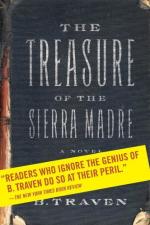|
This section contains 1,091 words (approx. 4 pages at 300 words per page) |

|
Long acknowledged as a classic of Hollywood cinema, director John Huston's 1948 film The Treasure of the Sierra Madre was among the first to make extensive use of on-location shooting and anticipated the themes that would come to characterize film noir: paranoia, greed, and duplicity. The virtue of the film is that it can be understood on a variety of levels—as an adventure story, as an etiology of one man's mental disease, as a subtle critique of capitalism, or as an anthropologic study of the clash of cultures. Laced with disturbing psychological truths, it is precisely the fable-like quality of the film—the timeless and acute observation of human nature—that makes the film so remarkable. Huston won Oscars for best direction and screenplay, and his father, Walter, for best supporting actor.
In the Mexican town of Tampico...
|
This section contains 1,091 words (approx. 4 pages at 300 words per page) |

|


